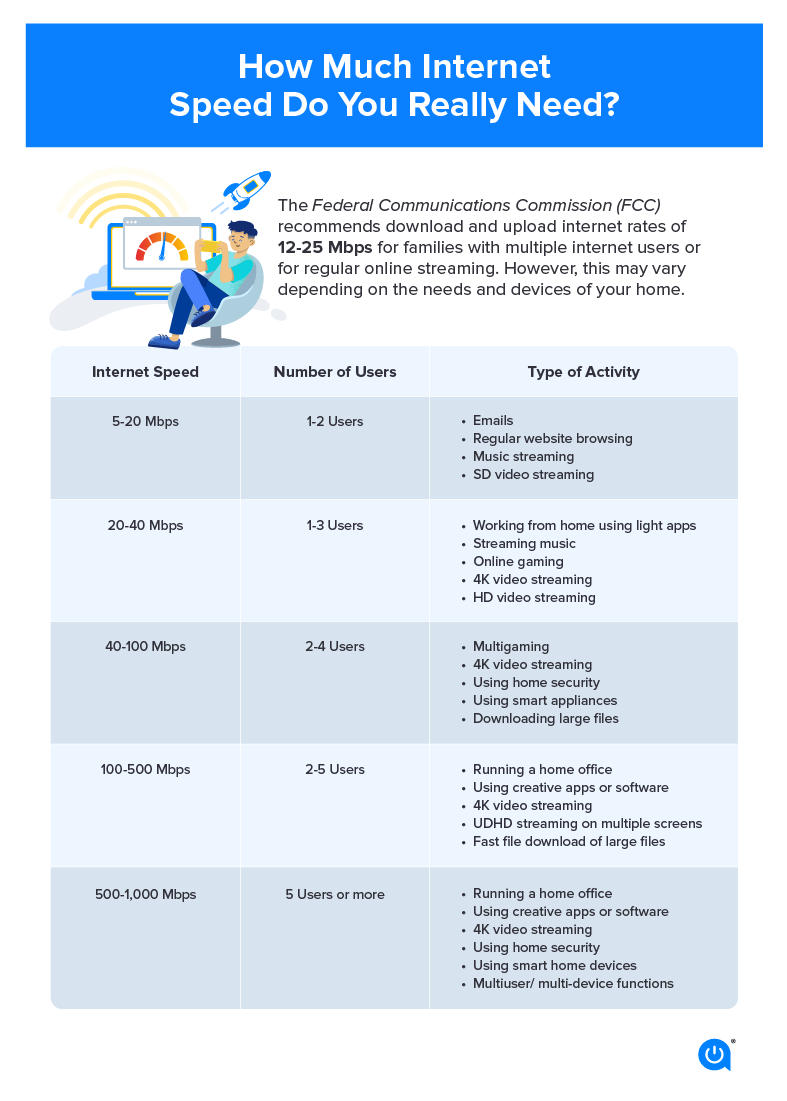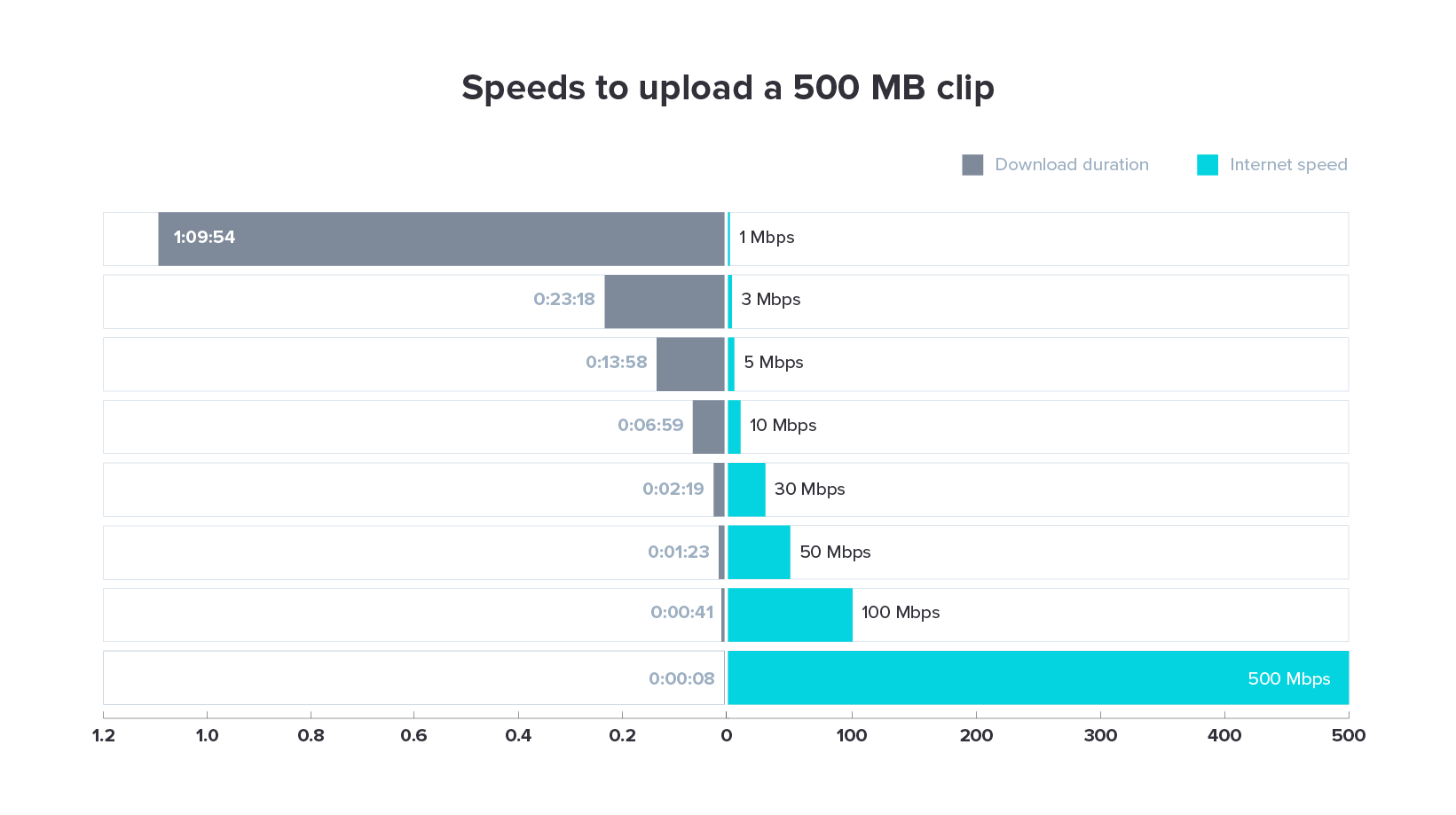Comprehending Exactly How Megabits Per Second Affect Your Internet Experience
Comprehending Exactly How Megabits Per Second Affect Your Internet Experience
Blog Article
How Megabits Per Second Effect Your Online Tasks
The principle of megabits per second (Mbps) plays a pivotal function in shaping our on the internet experiences. Higher Mbps can boost performance and lower interruptions, while inadequate speeds might promote aggravation and inadequacy.
Comprehending Megabits Per Second
When considering net speed, it's vital to comprehend the principle of megabits per second (Mbps), which acts as a standard dimension for information transfer rates. This statistics quantifies just how much information can be transferred over a net connection in one second, giving a clear understanding of performance capacities - Megabits Per Second. For context, one megabit amounts to one million bits, and Mbps is generally used to reveal transmission capacity for various on the internet tasks
A higher Mbps indicates a quicker internet link, enabling individuals to do jobs such as downloading data, surfing websites, and taking part in on the internet pc gaming more efficiently. As an example, regular browsing requires around 1-5 Mbps, while streaming high-definition video may require 5-25 Mbps. Understanding these demands is essential for establishing the suitable internet rate needed for certain tasks.
Furthermore, the variety of tools attached to a network can impact total performance. Several individuals streaming, pc gaming, or downloading and install at the same time can strain offered data transfer, leading to slower speeds - Megabits Per Second. Assessing personal online practices and requirements is vital in selecting an internet strategy that straightens with one's requirements, making sure a seamless digital experience
Streaming and Buffering Issues
Streaming high-definition web content has actually ended up being a staple of contemporary online entertainment, yet it is frequently accompanied by discouraging buffering concerns. These disruptions can considerably diminish the viewing experience, bring about frustration and prospective loss of audience involvement. Buffering happens when the data sent from the streaming service is not received promptly enough to keep a smooth playback, commonly because of insufficient net speed gauged in megabits per second (Mbps)

Moreover, real-time streaming can be affected by network blockage, which happens when multiple tools share the very same transmission capacity. Enhancing link speed and guaranteeing adequate Mbps is crucial for a smooth streaming experience. As streaming solutions remain to advance, recognizing the effect of Mbps on buffering issues stays vital for consumers looking for uninterrupted amusement.
Online Video Gaming Performance
The effect of internet rate on online activities prolongs past streaming, substantially affecting on the internet video gaming efficiency. In affordable gaming, reduced latency and high transmission capacity are essential for a smooth experience. A fast connection reduces lag, permitting players to react quickly to in-game occasions, which can be the difference in between victory and defeat.
Data transfer, gauged in megabits per second (Mbps), plays a crucial role in supporting several tools and pc gaming systems simultaneously. Insufficient data transfer can cause went down links or minimized game top quality, negatively influencing gameplay. As an example, on-line multiplayer games require significant information transfer, particularly during peak gaming hours when many players are online.
Hectic first-person shooters demand higher speeds to keep responsiveness, while turn-based approach video games might work moderately well on reduced speeds. As on-line pc gaming continues to develop, with raising graphical integrity and more complex multiplayer environments, the demand for greater Mbps will just intensify.
Video Conferencing High Quality
In today's electronic landscape, video conferencing high quality is greatly influenced by web rate, especially in regards to data transfer and latency. Top quality video calls call for enough transmission capacity to transfer sound and video data seamlessly. Generally, a minimum of 1.5 Mbps upload and download speeds is recommended for basic interpretation video, while high-def video clip conferencing typically requires a minimum of 3 Mbps.
Latency, or the hold-up between sending and receiving data, also plays an important duty in the user experience. Low latency guarantees that conversations flow normally without awkward stops briefly or interruptions. Ideally, latency should be listed below 150 nanoseconds for efficient communication. Greater latency can cause resemble, lag, and disjointed interactions, which can impede collaboration and involvement throughout meetings. Look At This
Furthermore, multiple individuals in a video site web conference can stress available data transfer, requiring even higher rates. Network congestion, frequently brought on by synchronised activities like streaming or downloading, can even more weaken video high quality. Thus, for organizations counting on video clip conferencing for remote partnership, understanding the partnership in between megabits per second and total interaction high quality is vital for keeping productivity and enhancing digital communications.
Selecting the Right Internet Plan
Picking an appropriate internet plan is critical for making certain optimal efficiency in various on the internet tasks, specifically in settings that require high transmission capacity, such as video conferencing and online video gaming. Megabits Per Second. When thinking about an internet strategy, it is necessary to review both the speed and information allowance to match your specific use demands
For families with multiple individuals participating in simultaneous activities, a plan providing greater megabits per second (Mbps) is suggested. Typically, a minimum of 25 Mbps is ideal for common streaming and surfing, while strategies surpassing 100 Mbps are preferable for even more intensive jobs. In addition, consider the nature of your online activities; video conferencing calls for a minimum of 1.5 Mbps upload rate, while online video gaming might need a lower latency yet constant connection.
Unlimited data strategies can stop strangling and disruptions, especially if heavy use is prepared for. By attentively choosing a net strategy tailored to your requirements, you can improve your on-line experience, making sure smooth, continuous access to your favored tasks.
Conclusion
In conclusion, the importance of megabits per second (Mbps) fit on the internet tasks can not be overstated. Higher Mbps facilitates seamless streaming, lowers buffering, boosts video gaming experiences, and ensures premium video clip conferencing. Conversely, insufficient bandwidth can cause discouraging interruptions and reduced efficiency throughout numerous jobs. A comprehensive understanding of private or family Mbps needs is crucial for picking an appropriate internet plan that adequately sustains diverse online activities and individual demands.

Generally, a minimum of 25 Mbps is appropriate for common streaming and browsing, while plans going beyond 100 Mbps are more suitable for more intensive tasks. In addition, take into consideration the nature of your online tasks; video clip conferencing calls for at least 1.5 Mbps post speed, while on the internet video gaming might need a reduced latency but constant link.
Report this page